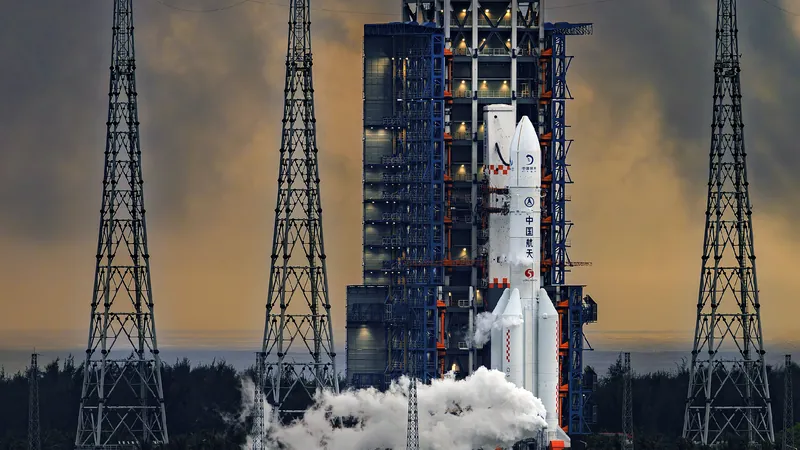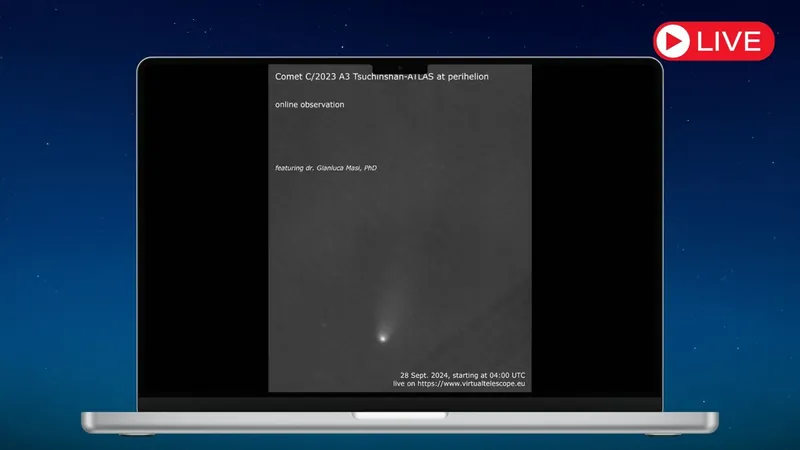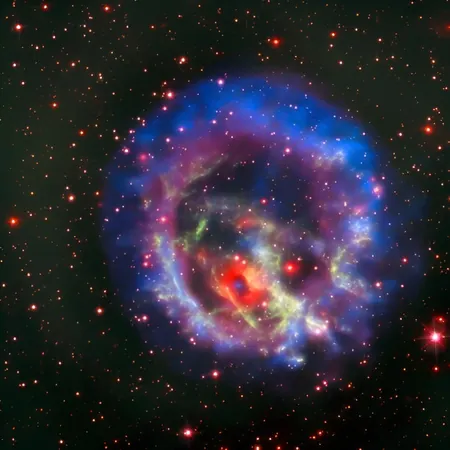
China's Lunar Odyssey: A 20-Year Journey Unveiling the Moon's Mysteries!
2024-09-23
China's Lunar Exploration Milestones
China's lunar exploration program has taken a giant leap forward, with the recent findings from the Chang'e-6 mission shedding new light on the far side of the moon. Only three months after the spacecraft's triumphant return to Earth, researchers have made fascinating discoveries about the lunar samples that could reshape our understanding of lunar geology.
Chang'e-6: A Historic Achievement
The Chang'e-6 mission marked a historic achievement as the first to bring back material from the moon's uncharted far side, with a whopping 1,935.3 grams of samples collected during its 53-day odyssey. Preliminary analyses indicate notable differences between the Chang'e-6 and its predecessor, Chang'e-5. The new samples are lighter in color due to an increased presence of plagioclase—a mineral crucial for understanding the moon's composition—while they show a significant reduction in olivine. Furthermore, the samples’ lower density hints at a more porous and loosely structured composition, which opens up a wealth of knowledge about the moon's formation and evolution.
Expert Opinions on the Mission
Leading experts in the field have heralded this mission as a pivotal moment in our quest to explore the moon. “The Chang’e-6 mission represents a significant milestone in the history of human lunar exploration,” stated Yang Wei, a prominent researcher at the Institute of Geology and Geophysics of the Chinese Academy of Sciences. “It will contribute to a more comprehensive understanding of lunar evolution.”
Historical Context: The Roots of China's Lunar Program
The roots of China's lunar ambitions can be traced back to ancient mythology, specifically the tale of Chang’e, the celestial lady who reportedly resides on the moon. Officially launched in 2004, China's lunar exploration program has adhered to a structured approach that has seen its share of groundbreaking missions. Beginning with Chang'e-1 in 2007, the program made swift progress with subsequent missions: Chang'e-2 achieving unprecedented lunar mapping in 2010, Chang’e-3 landing in 2013 with the first-ever lunar rover, Yutu, and the historic Chang’e-4 in 2019, which became the first to touch down on the moon's far side.
Future Missions: Continuing the Lunar Journey
But the excitement doesn’t end here! The Chang'e-6 success is merely a stepping stone towards an ambitious fourth phase. Upcoming missions include Chang'e-7, slated for a 2026 launch to explore the lunar south pole, and Chang'e-8 in 2028, which will focus on technological verification of lunar resource utilization and lay the groundwork for an international lunar research station (ILRS) by 2035.
International Collaboration for Lunar Research
This critical ILRS will encompass a variety of components, including an on-surface base, orbital stations, and Earth-based collaboration. The project has sparked international interest, with over 10 countries and 40 institutions joining forces for collaborative research. Wu Weiren, chief designer of China's lunar exploration program, emphasized the country's commitment to sharing knowledge and resources. “We welcome international cooperation from all countries, including those from the Global South, emerging BRICS nations, as well as Western and EU countries,” he noted in a recent interview.
Conclusion: The Future of Lunar Exploration
As China charts the path for further exploration of our celestial neighbor, their groundbreaking work promises to unravel lunar mysteries and pave the way for future human habitation of the moon. What new secrets lie beneath the lunar dust? The next chapter of lunar exploration has only just begun!




 Brasil (PT)
Brasil (PT)
 Canada (EN)
Canada (EN)
 Chile (ES)
Chile (ES)
 España (ES)
España (ES)
 France (FR)
France (FR)
 Hong Kong (EN)
Hong Kong (EN)
 Italia (IT)
Italia (IT)
 日本 (JA)
日本 (JA)
 Magyarország (HU)
Magyarország (HU)
 Norge (NO)
Norge (NO)
 Polska (PL)
Polska (PL)
 Schweiz (DE)
Schweiz (DE)
 Singapore (EN)
Singapore (EN)
 Sverige (SV)
Sverige (SV)
 Suomi (FI)
Suomi (FI)
 Türkiye (TR)
Türkiye (TR)